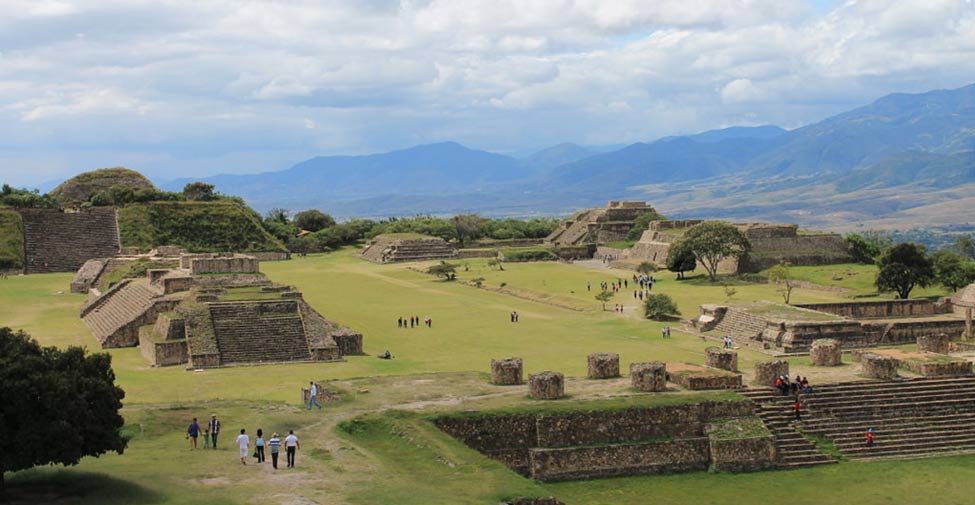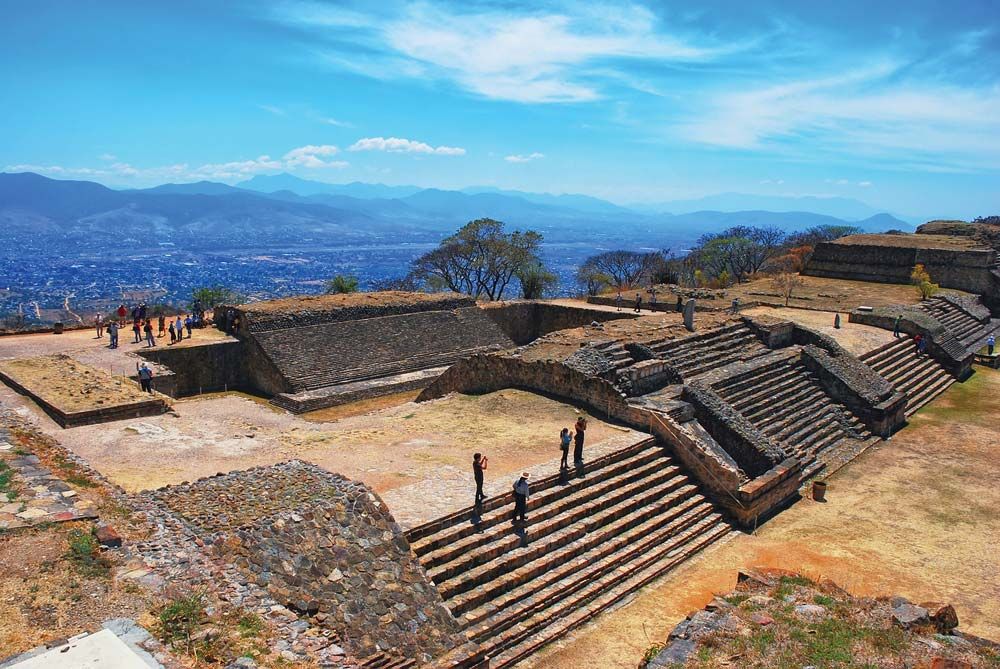Step back in time and explore the fascinating wonders of Monte Albán, an ancient city that once thrived with the illustrious Zapotec civilization. Nestled atop a panoramic hill in Oaxaca, Mexico, these hidden treasures are waiting to be unearthed. From its majestic pyramids and expansive plazas to its intricate stone carvings and ancient tombs, Monte Albán offers a captivating glimpse into the rich cultural legacy of the Zapotec people. Immerse yourself in the stories whispered by the wind as you wander through the remnants of a civilization etched into the rugged landscape of Mexico.
Exploring Monte Albán
Location and History
Monte Albán is an incredible archaeological site located in the Oaxaca Valley in southern Mexico. Situated on a mountaintop, it offers breathtaking views of the surrounding landscape. This ancient city was the capital of the Zapotec civilization and thrived from around 500 BC to 800 AD. The ruins of Monte Albán are a testament to the ingenuity and architectural mastery of the Zapotec people.
Significance of Monte Albán
Monte Albán holds enormous significance, not just for the Zapotec civilization but for the entire world. It was a thriving cultural, political, and economic center during its heyday. The city was a hub of innovation and cultural exchange, as evidenced by the intricate art and artifacts found at the site. Monte Albán played a key role in shaping the development of Mesoamerican civilizations and its impact can still be seen in Mexican art and culture today.
Archaeological Discoveries
Throughout the years, numerous archaeological discoveries have shed light on the rich history and culture of Monte Albán. Excavations have revealed intricate tombs, elaborately carved stone monuments, and ancient murals that provide valuable insights into the lives of the Zapotec people. These artifacts have not only deepened our understanding of the ancient civilization but have also captivated the imaginations of visitors from around the world.
Architecture and Layout
Overview of Monte Albán’s Structures
Monte Albán is characterized by its impressive architectural structures, which reflect the advanced engineering skills of the Zapotec people. The city features a well-planned layout with plazas, temples, ball courts, and residential areas. The buildings are constructed using massive stone blocks, intricately carved with symbols and images that hold great cultural and religious significance.
The Great Plaza
The Great Plaza is one of the most impressive areas within Monte Albán. Spanning over 33,000 square feet, it served as a gathering place for ceremonies, festivals, and political gatherings. The plaza is surrounded by structures known as the North Platform, South Platform, and the East Platform. These platforms were used for various purposes, including religious rituals and administrative functions.
Sacred Precinct
The Sacred Precinct, located at the center of Monte Albán, was the heart of religious activity. It contains several temples and altars where the Zapotec people conducted their ceremonial practices. The temples are adorned with intricate carvings and sculptures, depicting deities and mythical creatures. The Sacred Precinct was a sacred space where the Zapotec civilization connected with their spiritual beliefs.
Ball Courts
Ball games held immense cultural significance for the Zapotec people, and Monte Albán is home to several ball courts. These ball courts were not just places for athletic competition but were also arenas for religious and political ceremonies. Carvings and murals found in these areas depict ballgame rituals and the importance they held within the Zapotec society.
Tomb Sites
The tombs of Monte Albán provide valuable insights into the burial practices and the social hierarchy of the Zapotec civilization. Elaborate tombs have been discovered, containing valuable offerings such as jewelry, pottery, and precious metals. These tombs were reserved for the elite members of society, further illuminating the social structure of ancient Monte Albán.
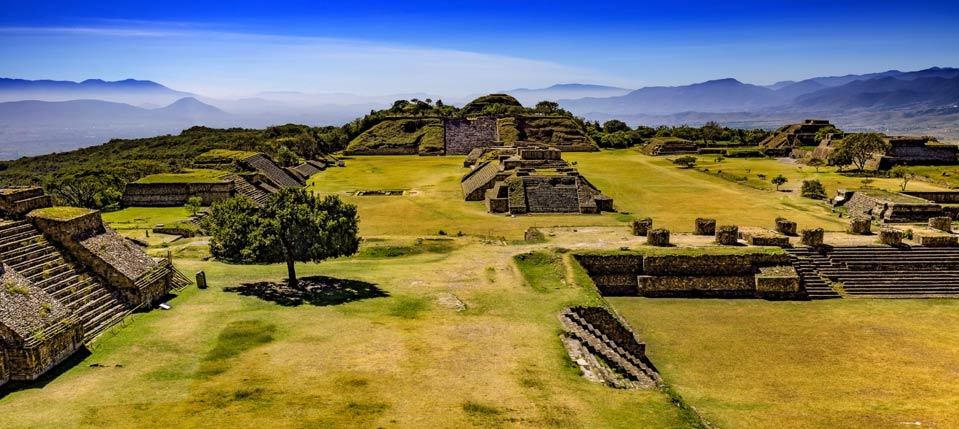
Art and Iconography
Symbols and Representations
The art and iconography of Monte Albán are incredibly detailed and symbolic. Carvings and sculptures found throughout the site depict various mythological and religious figures. Symbols such as serpents, jaguars, and birds are commonly seen in the artwork, representing different aspects of Zapotec beliefs. These symbols were used to communicate important cultural and spiritual concepts.
Famous Artifacts
One of the most famous artifacts discovered at Monte Albán is the “Danzantes” or “Dancers.” These are stone carvings that depict figures in contorted positions, believed to represent captives or sacrificial victims. The Danzantes provide valuable information about the rituals and ceremonial practices of the Zapotec civilization. Another notable artifact is the Tomb 105, which contains a wealth of gold and precious objects, showcasing the opulence of the ruling elite.
Artistic Influences
The art of Monte Albán exhibits a unique blend of indigenous Zapotec styles and influences from other Mesoamerican civilizations. The intricate carvings and vibrant murals demonstrate the artistic sophistication of the Zapotec people. The art of Monte Albán has had a lasting impact on Mexican art, influencing subsequent generations of artists and shaping the cultural identity of the region.
Religious Significance
Zapotec Religious Beliefs
The Zapotec civilization held a complex system of religious beliefs. They worshiped a pantheon of gods and goddesses associated with nature, agriculture, and celestial bodies. Monte Albán was considered a sacred site, believed to be a gateway between the earth and the heavens. Ceremonial practices centered around honoring these deities and seeking their blessings for bountiful harvests and protection.
Ceremonial Practices
Ceremonial practices at Monte Albán were an integral part of Zapotec religious life. Priests and rulers performed rituals and sacrifices to appease the gods and ensure the well-being of the community. These ceremonies involved processions, prayers, music, and dance. The sacred temples and altars within Monte Albán were the focal points of these ceremonies, serving as connectors between the spiritual and physical realms.
Ritual Offerings
To honor their gods, the Zapotec people offered a variety of gifts and sacrifices. These offerings included food, pottery, textiles, and valuable objects like jade and gold. Excavations of tombs have revealed intricate burial goods placed alongside the deceased, indicating a belief in an afterlife. The practice of ritual offerings demonstrated the deep spiritual connection between the Zapotec people and their deities.

Zapotec Culture and Society
Political Organization
The Zapotec civilization had a well-organized political system. Monte Albán served as the capital and administrative center, where rulers governed the surrounding territories. The ruling elite had a complex hierarchy, and political power was often passed down through royal bloodlines. The political organization of the Zapotec civilization played a crucial role in maintaining social order and fostering cultural development.
Economy and Trade
The economy of Monte Albán was based primarily on agriculture. The fertile valley surrounding the city allowed the Zapotec people to cultivate maize, beans, and squash. They also engaged in trade, both within the region and with other Mesoamerican civilizations. Archaeological evidence suggests that Monte Albán had a sophisticated market system, where goods such as pottery, textiles, and obsidian were exchanged.
Social Hierarchy
The social hierarchy of the Zapotec civilization was well-defined. At the top were the ruling elite, including the priests and rulers, who held significant political and religious power. Beneath them were the nobles and warriors, followed by farmers, artisans, and laborers. Social status was inherited, and individuals’ roles in society were largely determined by birth. Monte Albán’s layout and architectural design reflect this social hierarchy, with prominent structures reserved for the elite.
Daily Life
Daily life in ancient Monte Albán revolved around agriculture and community activities. Farmers labored in the fields, while artisans created intricate pottery and textiles. Families lived in close-knit communities, where communal activities and celebrations played a central role. The Zapotec people had a strong sense of communal identity and relied on each other for support and protection.
Archeological Excavations and Research
Early Explorations
The exploration and study of Monte Albán began in the late 19th century. Scholars and archaeologists from around the world were drawn to the mysterious ruins and began conducting excavations. These early explorations revealed the extraordinary wealth of cultural artifacts and buildings buried beneath the earth. They laid the foundation for future research and ignited a fascination with the Zapotec civilization.
Modern Excavations
Modern excavations at Monte Albán have utilized advanced techniques and technologies to uncover new information about the ancient city. Archaeologists have employed ground-penetrating radar, LiDAR imaging, and 3D scanning to map the ruins and gain a deeper understanding of the city’s layout. These methods have allowed researchers to excavate with greater precision and unlock new insights into the daily life and cultural practices of the Zapotec people.
Current Research Projects
Today, ongoing research projects at Monte Albán continue to expand our knowledge of the Zapotec civilization. Scholars are studying the ancient artwork, deciphering hieroglyphs, and analyzing isotopic data from human remains to unravel the complexities of Zapotec society. Collaborative studies involving international researchers and indigenous communities are fostering a multi-faceted approach to understanding Monte Albán and its significance.
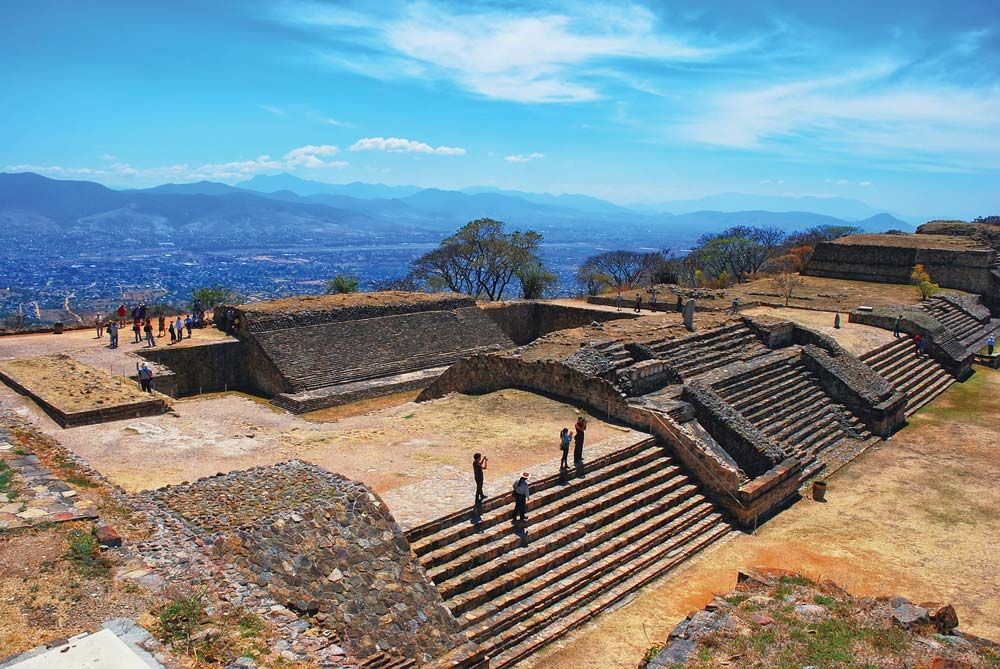
Preservation and Conservation Efforts
Challenges in Preservation
Preserving the ruins of Monte Albán presents numerous challenges. Environmental factors such as erosion, weathering, and vegetation growth can damage the structures and artwork. Human activities, including tourism and unauthorized excavations, also pose threats to the site’s preservation. Additionally, finding a balance between conservation and providing access for visitors is an ongoing challenge.
Restoration Projects
Efforts to restore and conserve Monte Albán have been ongoing for decades. Skilled professionals work meticulously to stabilize structures, repair damage, and protect fragile artifacts. These restoration projects aim to conserve the site’s integrity while maintaining its historical authenticity. The restoration work at Monte Albán ensures that future generations can continue to marvel at the architectural prowess of the Zapotec civilization.
Tourism and Preservation
Monte Albán attracts numerous visitors each year, drawn by its historical significance and stunning beauty. While tourism provides valuable economic opportunities for the surrounding communities, it also poses challenges for preserving the site. Sustainable tourism practices, educational programs, and strict regulation of visitor activities are essential for minimizing the impact on the archaeological remains and ensuring their longevity for future generations to enjoy.
Visiting Monte Albán
Visitor Information
Visiting Monte Albán is a remarkable experience that allows you to step back in time and immerse yourself in ancient history. The site is located just a few miles from the city of Oaxaca and is easily accessible by road. It is advisable to wear comfortable shoes and bring plenty of water, as the ruins involve walking and the climate can be hot. Additionally, it’s important to respect the site by not climbing on the structures or removing any artifacts.
Guided Tours
To make the most of your visit to Monte Albán, consider joining a guided tour. Expert guides provide valuable insights into the history, architecture, and culture of the Zapotec civilization. They can lead you to the most significant structures and explain the symbolism behind the artwork and carvings. Guided tours offer a comprehensive experience and ensure that you don’t miss out on any of the hidden treasures within Monte Albán.
Museum Exhibits
Before or after exploring the ruins, make sure to visit the on-site museum at Monte Albán. The museum houses a fascinating collection of artifacts and displays that provide further context and understanding of the ancient civilization. Here, you can see precious objects, intricate pottery, and learn about the techniques used by Zapotec artisans. The museum adds another layer of appreciation for the rich cultural heritage of Monte Albán.
Nearby Attractions
While Monte Albán is undoubtedly the main attraction, the Oaxaca Valley is home to other historical and cultural sites worth exploring. Nearby attractions include the charming city of Oaxaca with its vibrant markets, colonial architecture, and delicious cuisine. Additionally, the Tule Tree, one of the world’s largest trees, and the ancient ruins of Mitla are within a short distance from Monte Albán, offering further opportunities to delve into the region’s fascinating history.
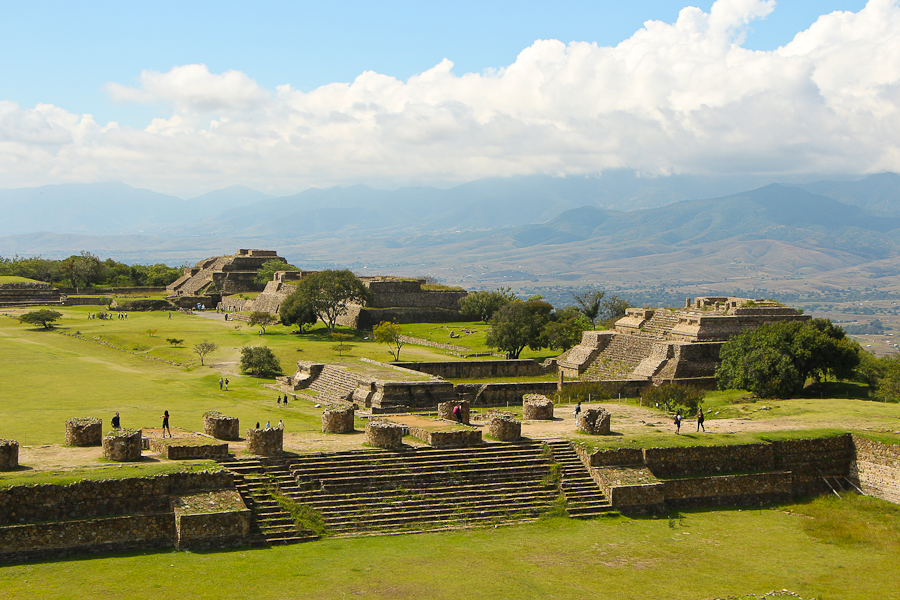
Cultural Significance and Heritage
Recognition as a World Heritage Site
The exceptional cultural and historical value of Monte Albán was recognized by UNESCO in 1987 when it was designated as a World Heritage Site. This prestigious designation highlights the significance of the ancient city and the need for its preservation. Monte Albán’s inclusion on the UNESCO list ensures its protection and raises global awareness of its importance as a cultural heritage site.
Zapotec Legacy
The Zapotec civilization, as represented by Monte Albán, has left an enduring legacy. Their architectural and artistic achievements continue to inspire awe and admiration. The cultural practices and religious beliefs of the Zapotec people have influenced subsequent generations and are still celebrated today. The legacy of the Zapotec civilization serves as a reminder of the remarkable ingenuity and cultural brilliance that emerged in ancient Mesoamerica.
Influence on Mexican Art and Culture
Monte Albán and the Zapotec civilization have had a significant impact on Mexican art and culture. The elaborate art and intricate carvings of the ancient city have influenced the work of contemporary Mexican artists. The visual motifs and cultural symbolism found at Monte Albán can be seen in various art forms, including painting, sculpture, and textiles. The fusion of ancient Zapotec traditions with modern artistic expressions showcases the enduring influence of Monte Albán on Mexican artistic heritage.
Future Discoveries and Research
Unexplored Areas
Despite decades of research and excavation, there are still unexplored areas within Monte Albán waiting to be uncovered. New technologies, such as LiDAR, have revealed hidden structures beneath the surface, hinting at the possibility of further archaeological wonders. The ongoing exploration of these unexplored areas holds the potential for future discoveries that could further expand our understanding of the Zapotec civilization.
Technological Advancements
Advancements in technology continue to revolutionize archaeological research techniques. Advanced imaging methods and data analysis tools allow researchers to gain a more comprehensive understanding of Monte Albán without disrupting the site. Continued technological advancements will undoubtedly play a crucial role in unraveling the mysteries of the ancient city and shedding new light on the lives of the Zapotec people.
Collaborative Studies
Collaboration between archaeologists, local communities, and indigenous groups is essential for the future of research at Monte Albán. By working together, sharing knowledge, and respecting indigenous perspectives, researchers can ensure a holistic approach to understanding the site. Collaborative studies foster mutual respect and allow for a more nuanced interpretation of Monte Albán’s history and cultural significance.
Unveiling the Hidden Treasures of Monte Albán: Mexico’s Zapotec Ancient Ruins paint a vivid picture of the awe-inspiring ancient city and its cultural importance. From its architectural marvels to its intricate artwork, Monte Albán showcases the creativity and spiritual devotion of the Zapotec civilization. As research continues and new discoveries are made, the ancient ruins of Monte Albán will continue to captivate the hearts and minds of visitors, providing a window into the rich cultural heritage of Mexico’s past.
